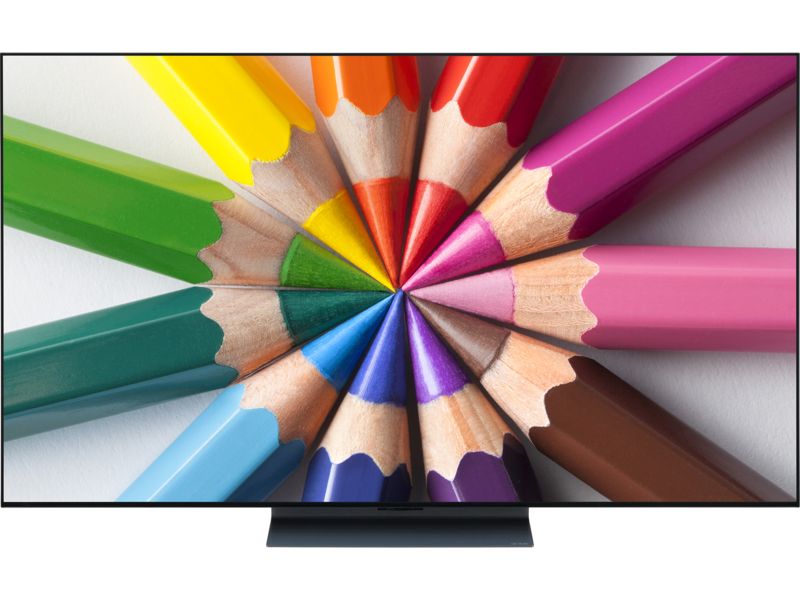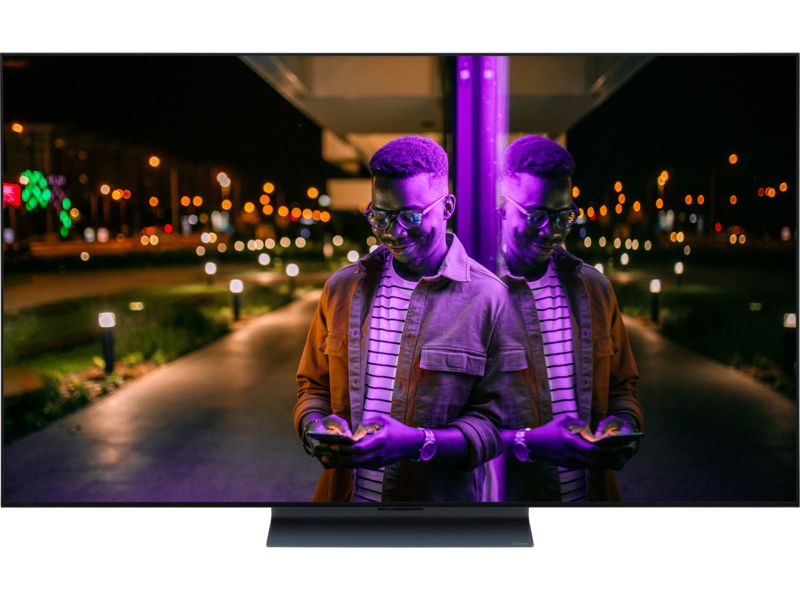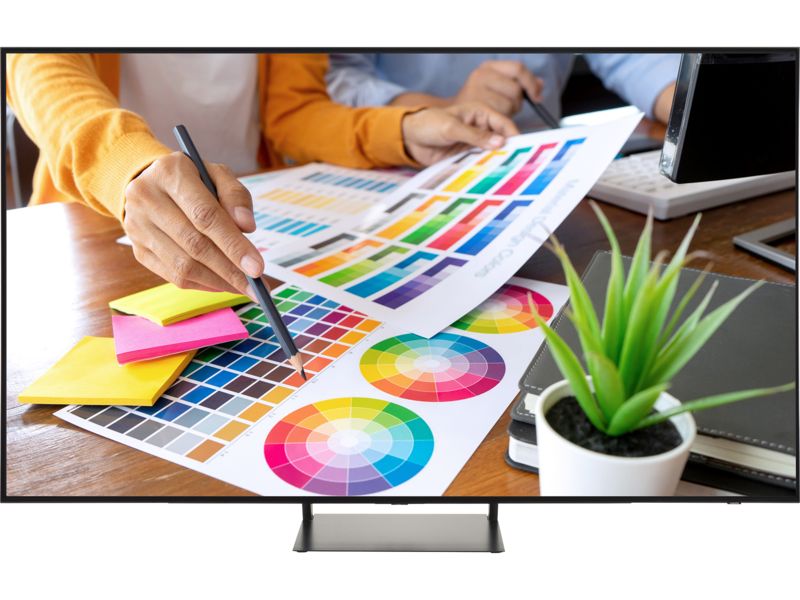Full Access first month £5, then £10.99 per month, cancel at any time
By clicking a retailer link you consent to third-party cookies that track your onward journey. If you make a purchase, Which? will receive an affiliate commission, which supports our mission to be the UK's consumer champion.
Should you buy a Hisense TV over an LG or Samsung?

Hisense TVs sit on store shelves beside models from some of the most established and admired TV manufacturers. It makes advanced and entry-level QLED and LCD TVs, so all bases are covered, and they are some of the cheapest money can buy.
Televisions that cost less than the competition have made Hisense one of the most popular TV brands in the UK. But low prices will only get you so far and, in previous years, its seat at the table has been more like the folding chair you drag out of the spare room when you have guests than the padded luxury enjoyed by some of its rivals.
For Hisense to bump LG TVs, Panasonic TVs, Samsung TVs or Sony TVs out of the three top-selling brands, its models near to score well in our tests.
We test and review hundreds of TVs each year. Head to our expert TV reviews to see which models come out on top and which is the right one for you
Should you buy a Hisense TV?
You can't walk into a shop, point at a TV and guarantee it will be good, regardless of the brand name embossed on the bezel.
Sure, with some brands you're more likely to get a good TV this way, but it's never something you can guarantee. With any brand you need to do your research, look at reviews and find the TV that's right for you.
The lower average score of Hisense TVs just means your pool of models worth buying is smaller, but that doesn't mean there are none worth your money.
Keep reading to see exactly how Hisense TVs compare in terms of spec, price and overall quality.
Make sure you check our expert TV reviews before you buy so you get one that's right for you.
- Sign up to revealAlready a member?Log in£to run per year
- Sign up to reveal
Full Access first month £5, then £10.99 per month, cancel at any time
Already a member?Log in£to run per year - Sign up to reveal
Full Access first month £5, then £10.99 per month, cancel at any time
Already a member?Log in£to run per year
How much cheaper are Hisense TVs?
The main selling point of Hisense TVs is price. They tend to be several hundred pounds cheaper than rival TVs and, as we've seen, they have roughly the same suite of features.
If we look at the average launch prices for 4K sets across five key TV brands, you can see just how much less you pay for a Hisense. Since some brands don't launch anything bigger than 65 inches, we haven't gone above this size.
| Brand | Average launch price |
|---|---|
| Hisense | £671 |
| LG | £1,188 |
| Samsung | £1,028 |
| Sony | £1,222 |
No brand comes close to the Hisense average price.
Definitely know you want a Hisense TV? See our Hisense TV reviews.
Are Hisense TVs better than LG, Samsung and Sony TVs?
We test almost every TV made by Hisense, LG, Panasonic, Samsung and Sony every year. Here's how the average scores of their 2023 releases compare. 2024 models are release in the Spring and Summer, and we test them throughout the year. We'll update this table with 2024 results when we've tested most of the models from each brand.
| Brand | Average test score |
|---|---|
| Hisense | 57% |
| LG | 66% |
| Samsung | 65% |
| Sony | 64% |
Hisense's prices are lower and its average score is lower, but averages don't always tell the whole story.
LG is the best brand on average, which is true in many cases, but there are some stinkers in its huge line-up.
With Hisense, it's the other way round. Typically its TVs struggle, but there are some diamonds in the rough. When costs are so low, it's worth searching for that one good model that's comparable to better-known brands, but undercuts them by hundreds of pounds.
How are Hisense TVs so much cheaper?
First off, it's worth saying that not all of them are. Some Hisense TVs, the bigger mini-LED model in particular, cost more than £1,000, which isn't cheap by any means. But compare them with similar-spec models from LG or Panasonic and they still cost a lot less.
It's in the mid-range sets where you'll see the major differences. Very few Hisense TVs, even the 65-inch models, top £1,000. You can expect to pay £400-£500 for the most common (43-inch to 50-inch) models.
These are launch prices, too. As the months roll on, the prices drop as they do with TVs from all brands.
Which begs the question: how is Hisense doing it?
- One reason could be that Hisense is simply taking a bigger hit on its profits. Its TVs could cost roughly the same to manufacture as everyone else's, but its mark-up is smaller. Hisense is an enormous company that makes more than just TVs. It may be happy to turn a bigger profit in other product areas while it makes a name for itself in TVs.
- It could be manufacturing TVs more cheaply. The more efficient a company is at producing a TV, the more cheaply it can sell them while turning a profit. That's why the price of high-end technologies gradually drops. QLED and OLED display were frighteningly expensive at launch, but several years later they are easier to make and more affordable as a result. Practice makes perfect (and cheaper).
- Hisense might be spending less on R&D and tuning. It's not as if all these brands put a few components in a thin plastic case and ship them all over the world. Each TV goes through tuning and quality control to make sure the picture and sound look as good as possible. This is expensive and time-consuming, but how expensive and time-consuming really depends. Hisense could be keeping costs down by spending less time on this important step.
Any or all of these possibilities could be true, we'll never know for sure. What we do know is, as the saying goes, it all shakes out in the wash, or, in this case, our tests.
Tech tips you can trust – get our free Tech newsletter for advice, news, deals and stuff the manuals don’t tell you.

Hisense vs LG, Panasonic, Samsung and Sony
Hisense TVs have all the tech to succeed, but top-tier features don't always add up to a top TV. A brand needs the know-how and skill to make the most of them.
Display types
Generally, TV brands stick with two or three display types, with a few subsets we won't get into:
- LG, Panasonic and Sony use LCD and OLED, while Samsung also has QLED TVs
- Hisense has used all three of these main display types, but in 2023 it isn't releasing an OLED TV, opting for LCD and QLED instead and this will likely be the same in 2024.
Hisense's top models have LCD displays with mini-LED backlights. They have far smaller bulbs than traditional backlights, so there are more of them, which should improve contrast.
Unusually, many of its lower-end TVs have QLED displays, which are found in other brands more often found in mid-range models. These are the same as LCD in most ways, but with an extra layer of quantum dots to create more vivid colours.
See our guide on TV screen technology to learn more about the differences between this formats.
How do the brands’ HDR TV screen standards compare?
There are five formats at the moment: HDR10, HLG, HDR10+, Dolby Vision and Dolby Vision IQ.
- HDR10 and HLG are basic formats supported by every 4K TV released in the past few years.
- HDR10+, Dolby Vision and Dolby Vision IQ are more advanced and can adjust contrast to suit each scene. HDR10+ and Dolby Vision IQ can also react to the ambient light in your room.
There's impressive consistency across the Hisense 2023 range, and most models support HDR10, HLG, HDR10+ and Dolby Vision IQ. We'll know more about HDR on 2024 models when they are released.
See more about how these formats differ in What is HDR TV?.

Sound processing
Sound is always difficult to quantify simply by looking at the spec. Other than Dolby Atmos, there aren't many features that are common across the brands.
Atmos is designed to send sound over your head, or at least simulate it, but since most TVs don't have speakers pointing upwards, this effect tends to be negligible.
Still, Atmos is something manufacturers make a big deal over – and it is present in Hisense's higher-end models.
Otherwise it's hard to say how Hisense TVs compare for sound technology – you really need to hear the speakers to see how they square up.
We use a panel of experts and listen to a variety of scenes to put the speakers through their paces. We listen for balance of tones and stereo separation. Many manufacturers reckon their TVs can create surround sound, so we listen for that, too.
Smart features and gaming
All Hisense TVs have app stores where you can download the popular ones you'd expect to see, such as BBC iPlayer, Netflix and YouTube. Most have a microphone in the remote, so you can control aspects of the TV with your voice through Alexa or Google Assistant.
When it comes to gaming, it's the high-end models where you'll get the best array of features. It's the same with the other brands and you always need to pay top prices for 120Hz displays, variable refresh rate (VRR) and graphics technology FreeSync or G-Sync.
Hisense keeps the pace here, too:
- Hisense's high-end mini-LED TVs have a 120Hz display, capable of displaying content up to 120 frames per second, and VRR to help prevent stuttering gameplay
- They support FreeSync
- The more basic, entry-level sets still support VRR, but don't have FreeSync or 120Hz display.
Read more about these features in our TV gaming guide.

What about the Hisense Laser TV?
It's a projector really, and not just any projector, the Laser TV is an ultra-short throw projector. This means it can sit almost flat against the wall you're using to display the picture on. This is different to traditional projectors, which work like the ones you find in the cinema. They need to sit further back and point directly at the wall.
We don't test Laser TVs, or any projector, but these can be a good idea if you want a huge display, as they tend to be cheaper than 85-inch or bigger TVs. The 100-inch Laser TV costs around £2,500, while a similarly sized traditional TV can cost four times that.
Laser TVs also come with a screen that the projector beams onto and this will need to be wall-mounted. It even has built-in speakers, which is unusual for a projector screen.
For more information on choosing the right TV, how much you should spend and which features to look out for, see the best TVs



